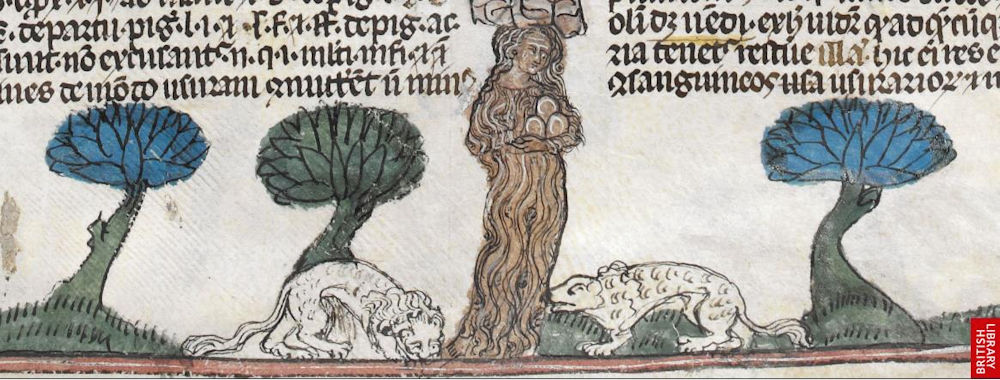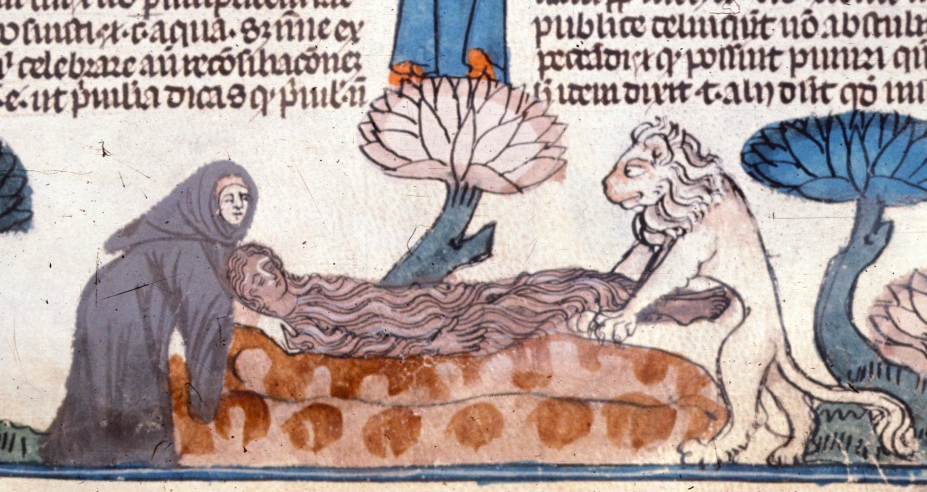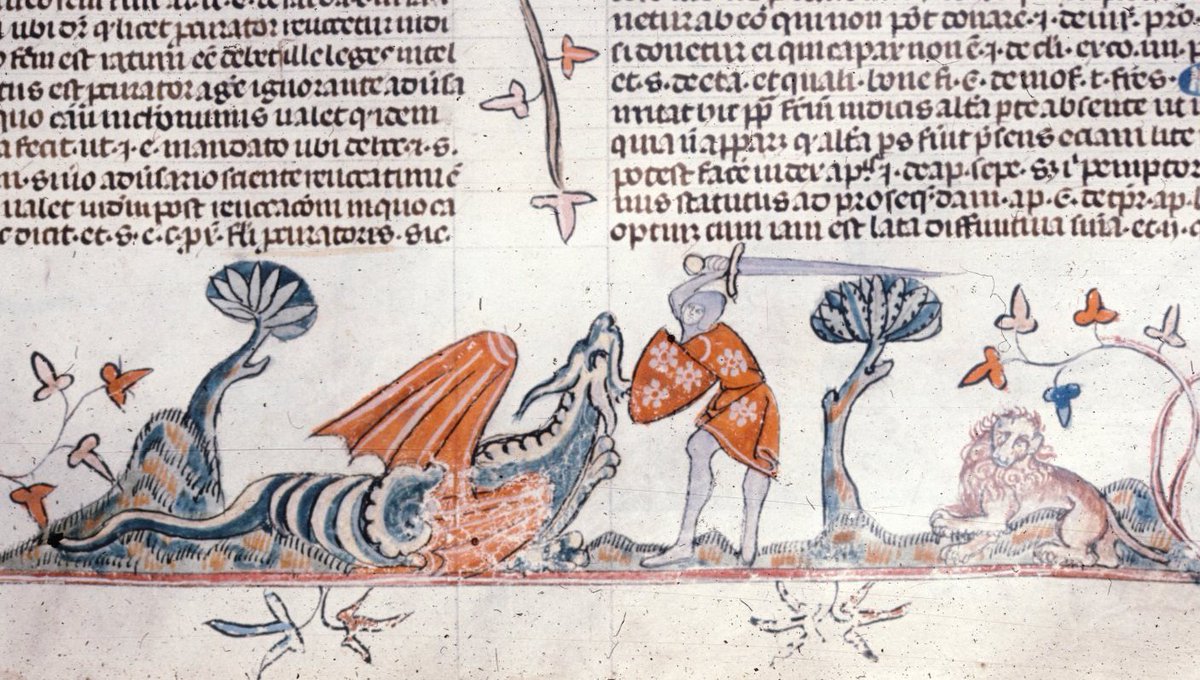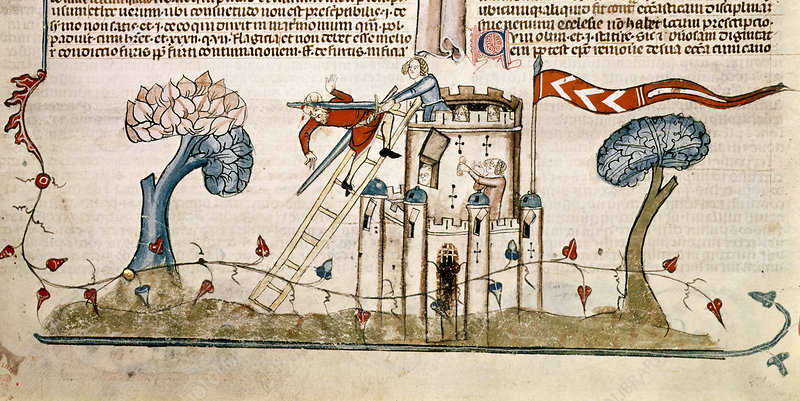It looks like you're using an Ad Blocker.
Please white-list or disable AboveTopSecret.com in your ad-blocking tool.
Thank you.
Some features of ATS will be disabled while you continue to use an ad-blocker.
share:
The Dark Mother of the gypsies is not exactly a Black Madonna, and while her story does include
three Mary's, in all the world Sara La Kali is unique.
Saint Sara is the patron saint of the Romani. She is considered an unofficial "folk" saint, but her tradition is still carried on under the auspices of the Catholic Church. The Rom come from all over the world in pilgrimage, visiting Saintes-Maries-de-la-Mer, in the Camargue, Southern France, where a festival is held each year. There is several origin myths but all involve three Mary's, with whom she either arrived, or met.
interfaithmary.net...
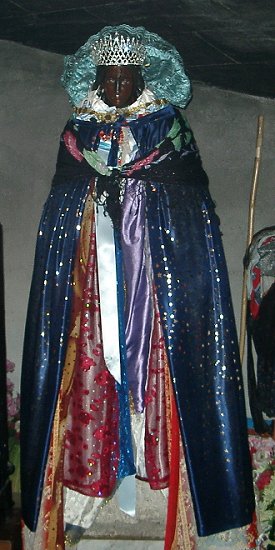
The Dravidian ancestors of the Roma were probably lower caste traders from Northern India, having left there 1500 years ago and followed the trade routes to Roman Egypt at Bernice Troglodytica. As camp followers during the Arab-Byzantine wars they went west into the Balkans and spread into Europe from 1100 AD.
Even then rumour followed along with them, with claims they had been expelled from Egpyt for hiding Jesus.
cell.com
radoc.net
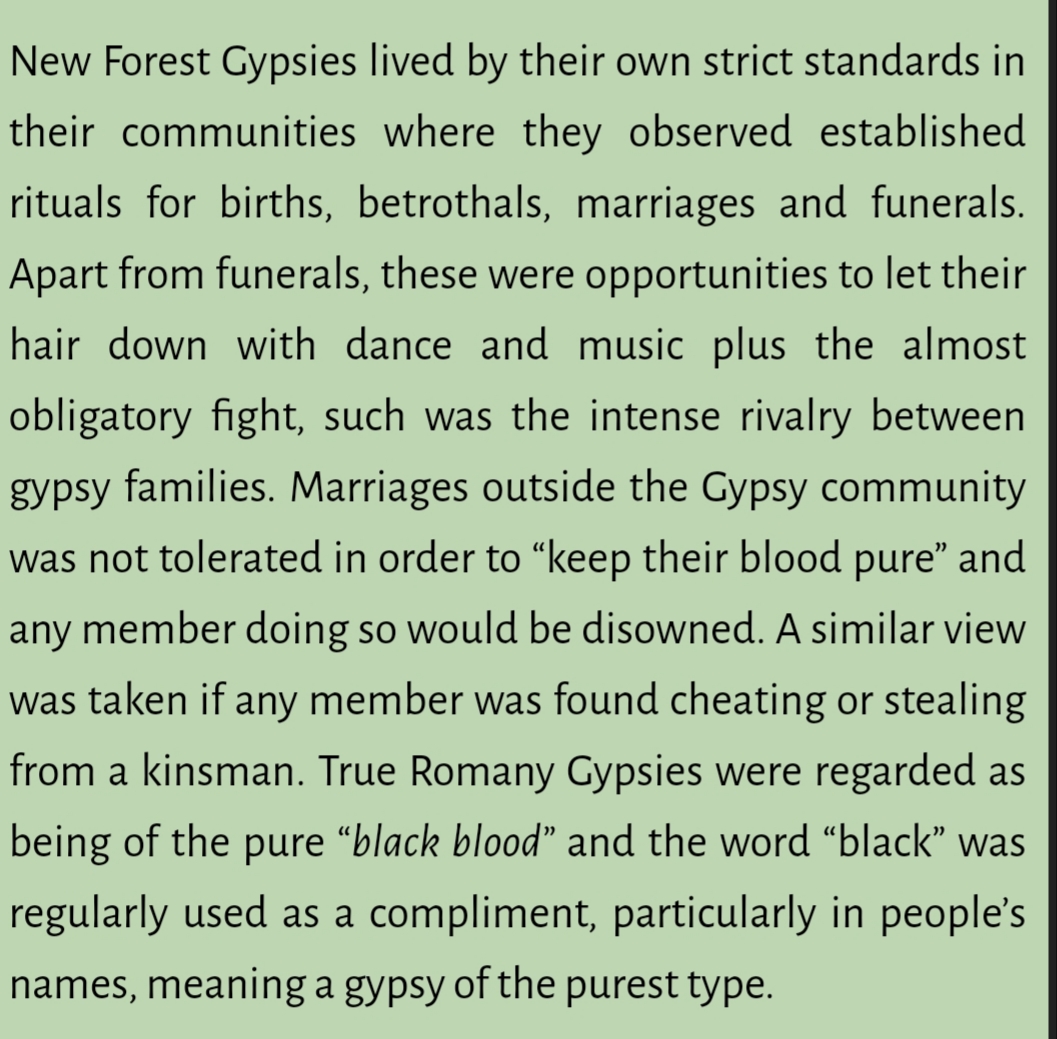
So who exactly is Saint Sara/Santa Sara La Kali/Sarah The Egyptian?
en.wikipedia.org...
Some will probably see a pattern emerging here, the resurgence of the Tripple Goddess, and indeed the Sacred Feminine emerges to retake her rightful place in the world, as inevitable as the tide. It's the focus on the dark aspect as dominant that I question.
en.wikipedia.org...
Indeed if we scratch just beneath the surface we find an emanation of Durga.
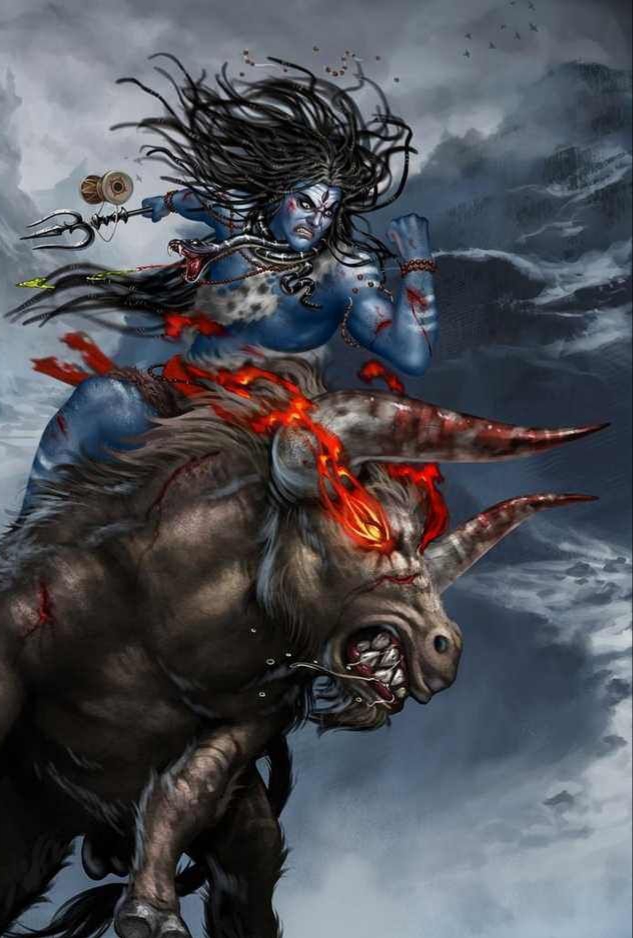
Kali the Destroyer
Durgasaptashati
The pilgrimage has been tied to a similar festival in India.
kopachi.com...
Bury Me Standing: The Gypsies and Their Journey
archive.org...
Durga is traditionally a member of another triune.
So there you have it, a tradition that obscures it's past by an ancient copy paste, first onto Ishtar in Egypt, then onto Mary 😊

Saint Sara is the patron saint of the Romani. She is considered an unofficial "folk" saint, but her tradition is still carried on under the auspices of the Catholic Church. The Rom come from all over the world in pilgrimage, visiting Saintes-Maries-de-la-Mer, in the Camargue, Southern France, where a festival is held each year. There is several origin myths but all involve three Mary's, with whom she either arrived, or met.
Her devotees fall on their knees before her, part her many robes and dive in head first under her skirts, resting their devout heads on her feet. Thus they pray and when they are done, they carefully and lovingly put each veil back in its place. Then the next person comes, parts the curtain, and plunges in.
interfaithmary.net...

The Dravidian ancestors of the Roma were probably lower caste traders from Northern India, having left there 1500 years ago and followed the trade routes to Roman Egypt at Bernice Troglodytica. As camp followers during the Arab-Byzantine wars they went west into the Balkans and spread into Europe from 1100 AD.
Even then rumour followed along with them, with claims they had been expelled from Egpyt for hiding Jesus.
cell.com
radoc.net
Gypsy.
From Middle English Gipcyan, Gypcyan, (Gyptian), from Old French gyptien. Short for Egyptian, from Latin aegyptius,

The Romani of England call themselves (in Angloromani) Romanichal, those of Scandinavia (in Scandinavian romanidialect) Romanisæl. In German-speaking Europe, the self-designation is Sinti, in France Manush, while the groups of Spain, Wales and Finland use Kalo/Kale (from kalo meaning "black" in Romani language).
So who exactly is Saint Sara/Santa Sara La Kali/Sarah The Egyptian?
One of our people who received the first Revelation was Sara the Kali. She was of noble birth and was chief of her tribe on the banks of the Rhône. She knew the secrets that had been transmitted to her... The Rom at that period practiced a polytheistic religion, and once a year they took out on their shoulders the statue of Ishtari (Astarte) and went into the sea to receive benediction there. One day Sara had visions which informed her that the Saints who had been present at the death of Jesus would come, and that she must help them. Sara saw them arrive in a boat. The sea was rough, and the boat threatened to founder. Mary Salome threw her cloak on the waves and, using it as a raft, Sarah floated towards the Saints and helped them reach land by praying.
en.wikipedia.org...
According to various legends, during a persecution of early Christians, commonly placed in the year 42, Lazarus, his sisters Mary and Martha, Mary Salome (the mother of the Apostles John and James), Mary Jacobe and Maximin were sent out to sea in a boat. They arrived safely on the southern shore of Gaul at the place later called Saintes-Maries-de-la-Mer. Sarah, a native of Berenice Troglodytica, whose ancestors once came from the Malabar Coast, through Indo-Roman trade relations, and settled in Egypt (Roman province) and intermarried with Egyptians, appears as the black Indo-Egyptian maid of one of the Three Marys (Mary Magdalene, Mary Salome, Mary Jacob) usually Mary Jacobe.
Some will probably see a pattern emerging here, the resurgence of the Tripple Goddess, and indeed the Sacred Feminine emerges to retake her rightful place in the world, as inevitable as the tide. It's the focus on the dark aspect as dominant that I question.
The motif of triple goddesses was widespread in ancient Europe; compare the Fates (including Moirai, Parcae and Norns), the Erinyes, the Charites, the Morrígan, the Horae and other such figures.
en.wikipedia.org...
Indeed if we scratch just beneath the surface we find an emanation of Durga.

Kali the Destroyer
“Salute to Durga, Durgapara, (Deliver of all difficulties), Sara, (Embodiment of everything par-excellent), Cause of everything, Krishna and Dhurma (Evaporated form in smoke).”
Durgasaptashati
The pilgrimage has been tied to a similar festival in India.
Indian scholars such as Dr. Weer Rishi (5) and others who have witnessed this Romani ceremony, as well as Western observers who are familiar with Hindu religious customs have identified this ceremony with the Durga Pooja of India. In Romani, Kali Sara means Black Sara and in India, the Goddess Kali is known as Kali/Durga/Sara. Like the Hindus, the Roma practice shaktism, the worship of Goddesses. In other words, the Roma who attend the pilgrimage to Les Saintes Maries in France and in other related ceremonies elsewhere honouring black female divinities, are in fact continuing to worship Kali/Durga/Sara their original Goddess in India.
kopachi.com...
Bury Me Standing: The Gypsies and Their Journey
archive.org...
Durga is traditionally a member of another triune.
The Tridevi (English: three goddesses; Sanskrit: त्रिदेवी, tridevī) is a concept in Hinduism joining a triad of eminent goddesses either as a feminine version of the Trimurti or as consorts of a masculine Trimurti, depending on the denomination
So there you have it, a tradition that obscures it's past by an ancient copy paste, first onto Ishtar in Egypt, then onto Mary 😊

edit on 21-4-2021 by primalfractal because: (no reason given)
a reply to: primalfractal
Intriguing, so in search of an actual conspiracy what does the name Sara mean, is it from the Sanskrit or the Hebrew.
Sara-Sanskrit
The context the term is generally used in is with regards to the Supreme principle, but also with regards to arrows.
This Cupid association they relate to Krishna.
This is the same situation with the Sumerian God Sara the son of Inanna, the term can be understood as the Universal, but also has association with piercing, in the sense of arrows, an archer God, but also association with piercing rays of light.
If the name is from the Hebrew then it means hair, and the same considerations also apply to Sara the given wife of Abraham.
What if you try to factor in both, what if the essence can be taken as hair, che sara sa'ara, there was the tradition of certain Queen Berenices offering their hair as sacrificial offering,
There is also a Berenice daughter of Herod that shaved her head and offered her hair as a Nazirite vow.
Coma Berenices
So the arrival at the Port of Berenice has association with the curious translation of hair to Coma Berenice the Constellation and the offering of Feminine essence, that constellation previously understood as the Frond and representing Erua or Sarpanit the Queen of Babylon
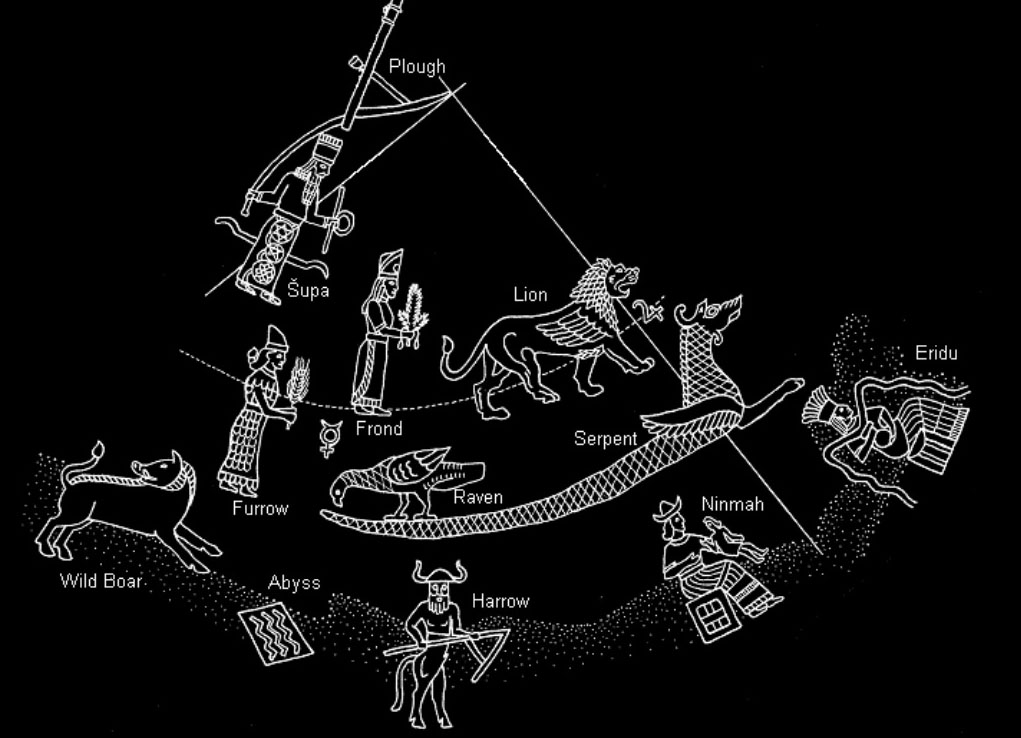
There is the connection to the Abyss, in fact we could take Virgo/Furrow and Frond/Erua as Demeter and Persephone, in Sumer Nisaba and Sud/Nin-lil, and thus Erua has the association of the Maiden of Spring, the return from the underworld, the dark aspect of the Triple Goddess.
Intriguing, so in search of an actual conspiracy what does the name Sara mean, is it from the Sanskrit or the Hebrew.
sāra—the essence
sāra—active principle
sāra—essence of all Vedic knowledge
Sara-Sanskrit
The context the term is generally used in is with regards to the Supreme principle, but also with regards to arrows.
śara—with arrows
panca-śara—of Cupid, the master of the five arrows of the senses
This Cupid association they relate to Krishna.
Kṛṣṇa is the owner of these five arrows, and with His Cupid-like beauty, He conquers the minds of the gopīs, though they are very proud of their superexcellent beauty. Becoming a new Cupid, Kṛṣṇa attracts their minds and engages in the rāsa dance.
This is the same situation with the Sumerian God Sara the son of Inanna, the term can be understood as the Universal, but also has association with piercing, in the sense of arrows, an archer God, but also association with piercing rays of light.
If the name is from the Hebrew then it means hair, and the same considerations also apply to Sara the given wife of Abraham.
The masculine noun שׂער (se'ar) means hair in general (Genesis 25:25, Judges 16:22)
The feminine noun שׂערה (sa'ara) denotes a single hair (1 Samuel 14:45).
What if you try to factor in both, what if the essence can be taken as hair, che sara sa'ara, there was the tradition of certain Queen Berenices offering their hair as sacrificial offering,
In the Latin translation of the poem by the Roman poet Catullus and in Hyginus' De Astronomica, Berenice II. dedicated her tresses to Aphrodite and placed them in the temple of Arsinoe II (identified after Berenice's death with Aphrodite) at Zephyrium. According to De astronomica, by the next morning the tresses had disappeared. Conon proposed that Aphrodite had placed the tresses in the sky as an acknowledgement of Berenice's sacrifice
There is also a Berenice daughter of Herod that shaved her head and offered her hair as a Nazirite vow.
Josephus describes Berenice’s role as a solitary pacifying force in preliminaries of the Revolt. He explains her presence in Jerusalem as resulting from a vow she had made, which she needed to fulfill. As required by the vow, her hair was shorn and she walked barefoot
Coma Berenices
So the arrival at the Port of Berenice has association with the curious translation of hair to Coma Berenice the Constellation and the offering of Feminine essence, that constellation previously understood as the Frond and representing Erua or Sarpanit the Queen of Babylon
is called"the queen who produces birth," but more especially by the circumstance, that she must be identical with Aruru, who created the seed of mankind along with Merodach. Why she was called "the lady of the abyss," and elsewhere "the voice of the abyss" (/Me-abzu/) is not known. Zer-panitum was no mere reflection of Merodach, but one of the most important goddesses in the Babylonian pantheon. . She was identified with the Elamite goddess named Elagu, and with the Lahamum of the island of Bahrein, the Babylonian Tilmun

There is the connection to the Abyss, in fact we could take Virgo/Furrow and Frond/Erua as Demeter and Persephone, in Sumer Nisaba and Sud/Nin-lil, and thus Erua has the association of the Maiden of Spring, the return from the underworld, the dark aspect of the Triple Goddess.
a reply to: Madrusa
Always glad to amuse Your reply was enlightening
Think actual conspiracies are not PC, even here.
Besides the obvious parrells that can be drawn between the two races, strange customs and taboos, the etomolgical and symbolic which you pointed out, there is a couple of modern and historical connections coming to light recently.
www.ynetnews.com...
www.goodreads.com...
There is an oral tradition passed down amongst gypsies, that they were the army that lost against Moses in the Red Sea battle. Although hearsay, not a huge stretch to equate gypsies with the diaspora, especially given their penchant for cover ups.
Brings to mind the struggle between Eros (profane) and Anteros (sacred) over Psyche (the human soul) and Venus prior to the establishment of a new Aeon. Reperesting whether Earth will be ruled by good or evil in the new age.
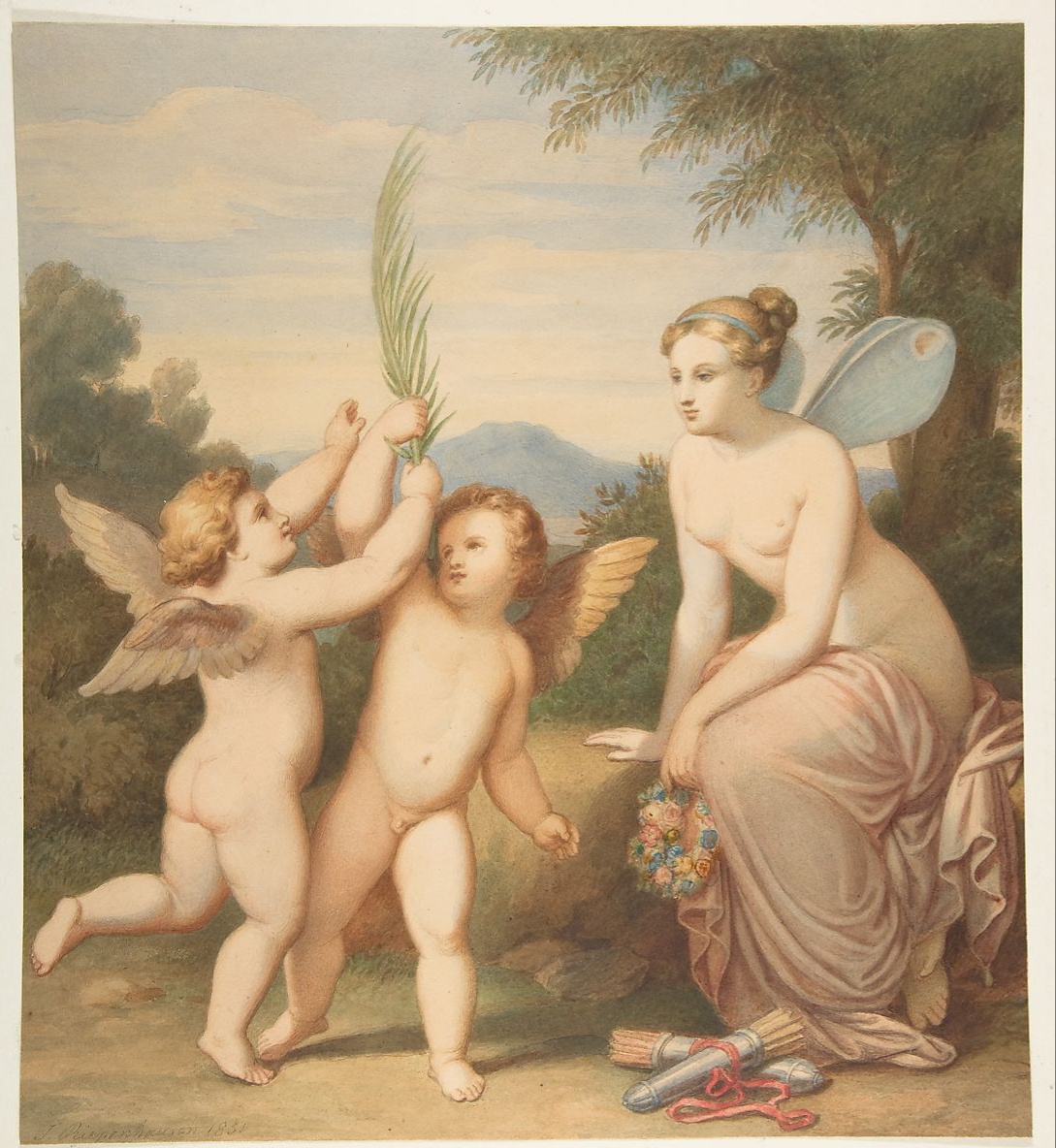
The hair offering maybe being a sign the bad side won that time? Sorta a reverse of this.

Intriguing, so in search of an actual conspiracy what does the name Sara mean, is it from the Sanskrit or the Hebrew.
Always glad to amuse Your reply was enlightening
Think actual conspiracies are not PC, even here.
Besides the obvious parrells that can be drawn between the two races, strange customs and taboos, the etomolgical and symbolic which you pointed out, there is a couple of modern and historical connections coming to light recently.
The Jewish-Romani connection: Are Gypsies descendants of tribe of Simeon?
Israeli scholar creates Jewish-Gypsy Forum after discovering biblical link between Jews and Romani people. Since publishing his research findings, he says, he has been contacted by thousands of members of the Romani community, and hundreds have been flocking to Israel for meetings with the forum members.
www.ynetnews.com...
Assyria invaded the northern kingdom of Israel and all the ten tribes were herded off to be exiled within the occupied lands of the Assyrian empire. Most notably, many Israelites found themselves in north-west India, today known as southern Pakistan, and of course, Persia.
www.goodreads.com...
There is an oral tradition passed down amongst gypsies, that they were the army that lost against Moses in the Red Sea battle. Although hearsay, not a huge stretch to equate gypsies with the diaspora, especially given their penchant for cover ups.
This is the same situation with the Sumerian God Sara the son of Inanna, the term can be understood as the Universal, but also has association with piercing, in the sense of arrows, an archer God, but also association with piercing rays of light.
Brings to mind the struggle between Eros (profane) and Anteros (sacred) over Psyche (the human soul) and Venus prior to the establishment of a new Aeon. Reperesting whether Earth will be ruled by good or evil in the new age.

The hair offering maybe being a sign the bad side won that time? Sorta a reverse of this.

edit on 21-4-2021 by primalfractal because: (no reason given)
a reply to: primalfractal
Yes there's no reason a strong identification with the dark aspect of a Triple Goddess system couldn't have happened elsewhere previously or even in the present day such as Our Lady of the Abyss, but with regards to the association of Gypsy Sara with Mary Magdalene that gives rise to the concept of Hairy Magdalene, as Coma Berenices.
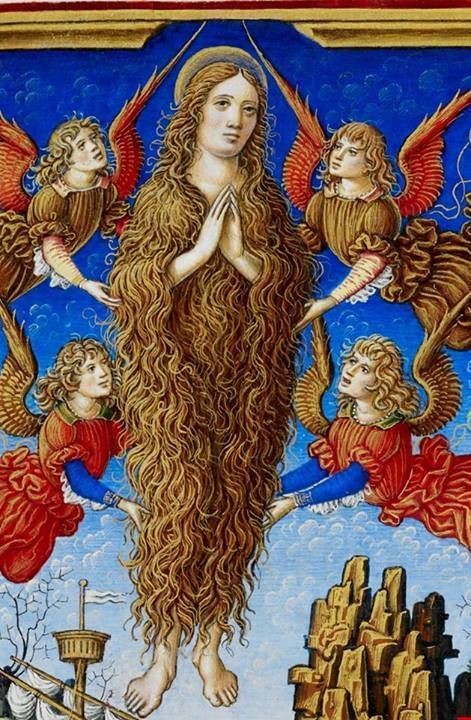
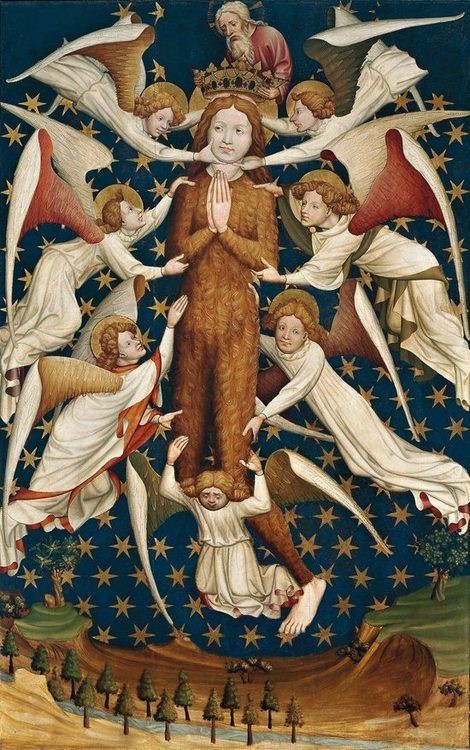
And as such also Erua/Sarpnait the Goddess of seed and pregnancy, this also the reason she wipes the feet of Jesus with her hair, the relationship of Coma Berenices to the toe star Arcturus of Bootes, were Bootes represented En-lil and in Babylon Marduk.
There is also the relationship of the Hairy Goddess to the tree of knowledge and of life, in terms of the date palm branch.

As such she can be taken as a second Eve, or related to the first on the isle of Dilmun.
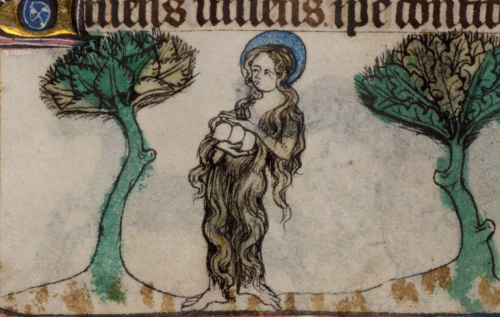
Yes there's no reason a strong identification with the dark aspect of a Triple Goddess system couldn't have happened elsewhere previously or even in the present day such as Our Lady of the Abyss, but with regards to the association of Gypsy Sara with Mary Magdalene that gives rise to the concept of Hairy Magdalene, as Coma Berenices.


And as such also Erua/Sarpnait the Goddess of seed and pregnancy, this also the reason she wipes the feet of Jesus with her hair, the relationship of Coma Berenices to the toe star Arcturus of Bootes, were Bootes represented En-lil and in Babylon Marduk.
There is also the relationship of the Hairy Goddess to the tree of knowledge and of life, in terms of the date palm branch.

As such she can be taken as a second Eve, or related to the first on the isle of Dilmun.

a reply to: primalfractal
Very interesting! I vetured down that road too... Thanks to a member here
The Gypsies are remarkable, for beeing the oldest uninterupted culture still thriving around the world... they are every where and yet no where.
They have been the first to bring street entertainment for the slaves (you/me).
The day Kings and Popes realized that the gypsies are much more effective manipulating and steering the sheeps, it was from "do as your told" by the kings and "it is all Gods will" by the popes to a new way of Power "It is your own decision" but entertainment steers the decision making process.
They never abandoned that sector, and evolved with the evolving technologies... Its blatantly obvious where they ended up---
They are masters in illusions, NLP, and all sort of shady manipulation techniques...
Stay safe
Sincerly ..
Very interesting! I vetured down that road too... Thanks to a member here
The Gypsies are remarkable, for beeing the oldest uninterupted culture still thriving around the world... they are every where and yet no where.
They have been the first to bring street entertainment for the slaves (you/me).
The day Kings and Popes realized that the gypsies are much more effective manipulating and steering the sheeps, it was from "do as your told" by the kings and "it is all Gods will" by the popes to a new way of Power "It is your own decision" but entertainment steers the decision making process.
They never abandoned that sector, and evolved with the evolving technologies... Its blatantly obvious where they ended up---
They are masters in illusions, NLP, and all sort of shady manipulation techniques...
Stay safe
Sincerly ..
Hush nae, hush nae, dinna fret ye
The black Tinkler winna get ye.
The Romani have a strange background of being expelled from many countries, going right back to the middle ages. Most recently from France. Counterbalancing this, in some locales they were granted special privilege. My contention is that it's related to their worship of the dark goddess, and ties in to the worldwide criminal enterprises of TPTB.
Timeline of Romani
After two fatal incidents, President of France Nicolas Sarkozy vowed in July 2010 to evict at least half of the 539 Romani squatted land camps.
On 16 July 2010, French police shot and killed Luigi Duquenet, a 22-year-old French Romani man who drove through a police checkpoint. In retaliation, a group of around 50 people variously identified as Roma or travellers rioted in the small village of Saint-Aignan, attacking the police station with axes and iron bars. The local mayor described the disturbances as "a settling of scores between the travellers and the gendarmerie
Wikipedia.org
Sound familiar?
1990: Rumors sweep through Italy that mysterious figures have been stealing children to supply an underground market in human organs. Figures in black ambulances are said to be grabbing girls and boys in broad daylight; kidnappers in fake uniforms are said to be hunting for prey near schools; Gypsy women are said to be pulling children under their billowing skirts while their mothers are distracted, then escaping before anyone realizes what has happened.
In Bologna, Véronique Campion-Vincent writes in her book Organ Theft Legends, the fears come to a head, with bloody "punitive expeditions" on Roma camps.
Reason.com
Just rumours?
Where there's smoke there is usually fire.
Romanian gipsy gang 'snatched 200 children from homes to use them as beggars'
A gang of Romanian gipsy child-snatchers stole almost 200 poor children from their families and brought them to Britain to pick pockets, a court heard.
However, the 181 children were beaten and abused, with some even deliberately disfigured to increase their earning potential, as disabled beggars were thought to generate more income.
A police spokesman said: "The children were told their families would be at risk if they tried to flee, and families were told the children would be harmed if they made a complaint to authorities."
telegraph.co.uk
If you've travelled in Europe you will know the dangers of the Roma, or Gypsy, children who stake out the major tourist centres and swarm around visitors aiming to stealing their money, credit cards and other valuables. Now Producer Liviu Tipurita, using hidden cameras and some remarkable detective skills, shows how these children operate. Far from acting alone he reveals how many of them are involved in a system of organised crime that stretches right across the continent, a system the police say they cannot stop .
abc.net.au
In Transylvania, where many Gypsies were serfs of the royalty, the discourses prevailed surrounding various rights given to only Gypsies. These included the protection of the royal family, exemption from military service, freedom of movement between regions, and the right to settle in any domain so long as they had the permission of the monarch. The Gypsies also had a virtual monopoly on panning for gold in Moldavia, Wallachia, and Transylvania, and the gold dust and taxes they tendered constituted an important source of wealth for the state. Such preferential treatment related to panning for gold was institutionalized with the advent of the early modern period. Achim explains that in order to protect the Gypsies, who represented a strong source of revenue, the State “protected them and instituted a privileged regime for them, under which they were exempted from any public tasks and sometimes from certain obligations that they were otherwise obliged to provide to the owner of the estate on which they dwelt” (Achim 2004, 50–51).
tandfonline.com
edit on 21-4-2021 by primalfractal because: (no
reason given)
a reply to: Terpene
Great post Terpene, another piece of the puzzle and one that I wasn't aware of, makes sense in the bigger picture.
They have always been renowed for hex's and curses (one actually cast one on me once the b#), a process which is partially explained in modern terms by covert hypnotism as you say.
You stay safe too 😊
The day Kings and Popes realized that the gypsies are much more effective manipulating and steering the sheeps, it was from "do as your told" by the kings and "it is all Gods will" by the popes to a new way of Power "It is your own decision" but entertainment steers the decision making process.
They never abandoned that sector, and evolved with the evolving technologies... Its blatantly obvious where they ended up---
They are masters in illusions, NLP, and all sort of shady manipulation techniques...
Great post Terpene, another piece of the puzzle and one that I wasn't aware of, makes sense in the bigger picture.
They have always been renowed for hex's and curses (one actually cast one on me once the b#), a process which is partially explained in modern terms by covert hypnotism as you say.
You stay safe too 😊
a reply to: Madrusa
Hairy Magdaline is a classic!
I'm sure they had good reason, probably attacked by mad march hares.
Maybe sent by the "synagogue of satan".
english.stackexchange.com...
Well it's a good graphic novel, sure beats marvel.
Hairy Magdaline is a classic!
Get's here better when killer Hares of the Spring Maiden/Eostre start murdering everyone
I'm sure they had good reason, probably attacked by mad march hares.
Maybe sent by the "synagogue of satan".
To be as "mad as a March hare" is an English idiomatic phrase derived from the observed antics, said to occur only in the March breeding season of the European hare, Lepus europaeus. The phrase is an allusion that can be used to refer to any other animal or human who behaves in the excitable and unpredictable manner of a "March hare".
Moreover, the embattled hares are not males fighting against males, but females fighting against males, presumably to resist their advances. Since the females are generally bigger than males, they often win these battles. Nor do the fighting partners end their battles in mating; the triumphant female simply hops away.
english.stackexchange.com...
He [the "erchedeken"] hadde a Somnour redy to his hond,/A slyer boy was noon in Egelond;/For subtilly he hadde his espiaille/That taughte him, wher that him might availle./He could spare of lechours onn or two,/To techen him to foure and twenty mo./For thogh this Somnour wood were as an hare,/To telle his harlotrye I wol nat spare;/For we been out of his correccioun;/They han of us no Iurisdiccioun,/Ne never shullen, terme of alle hir lyves.
In the context given, wood does indeed mean "mad."
Well it's a good graphic novel, sure beats marvel.
edit on 22-4-2021 by primalfractal because: (no reason given)
a reply to: primalfractal
So we find in the legend there are three Marys and a Martha and Sara appears as the black Indo-Egyptian maid of one of the Three Marys, usually Mary Jacobe. to make a Pentad;
This we trace back to Uruk.
The most likely aspect for Sara is Beltu-sa-res, the Feminine aspect of Bel, Beltene (from beltu, "to die"), the essence of fire.
They are cool though the images of the Grail Castle from France, that can trace back to the Torre Magdala, the E-sagalia in Babylon and the E-ana in Uruk, the cult of the crooked tree, the hairy thing is Semites not getting Sanskrit.
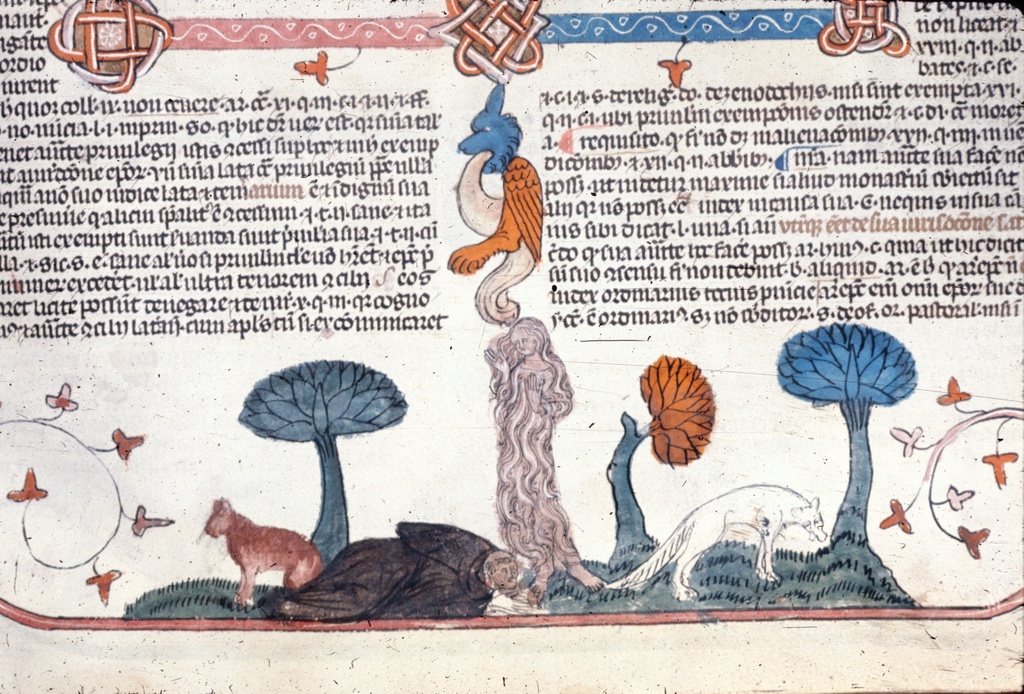


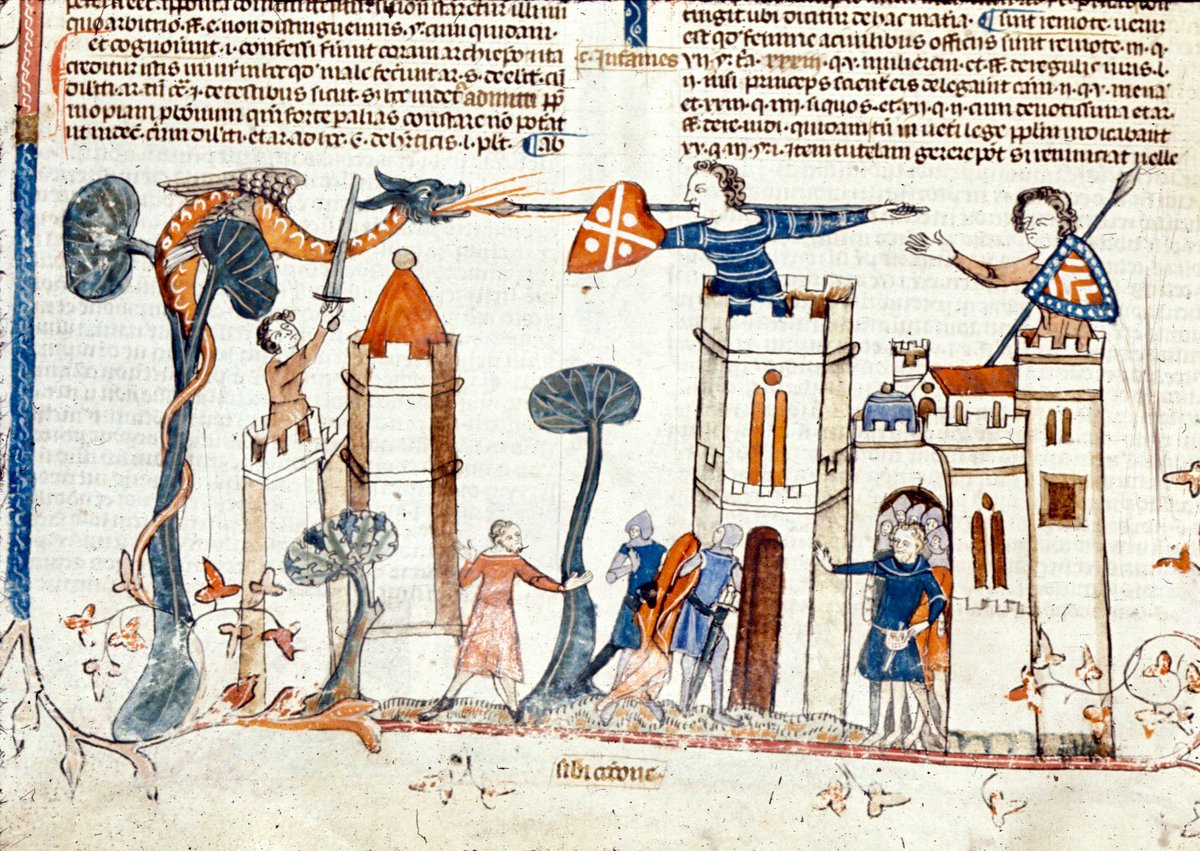
So we find in the legend there are three Marys and a Martha and Sara appears as the black Indo-Egyptian maid of one of the Three Marys, usually Mary Jacobe. to make a Pentad;
Lazarus, his sisters Mary and Martha, Mary Salome (the mother of the Apostles John and James), Mary Jacobe and Maximin were sent out to sea in a boat.
This we trace back to Uruk.
Some texts mention a group of goddesses collectively named the "Ladies" Nanaya, Beltu-§a-Re§, Usur-amassu, and Urkayltu. They formed with Istar a pentad which stood at the center of the religious life of Uruk, it is probable that each of these goddesses was to some degree viewed as a manifestation of Istar.
Lady of the princely powers, emerging brilliantly like the daylight, chosen forever for her virtuous beauty! Nanaya, ornament of E-ana, worthy of the Lady! Wise one, correctly chosen as lady of all the lands by the Mistress: Nanaya, you instruct the Land, bestowing wisdom in E-ana
Nanaya, properly educated by holy Inana, woman who is as bright as the stars, wise lady who is available for everything, righteous sympathetic woman, lady who is always available on request,counseled by holy Inana, beloved by the Mistress!
To the goddess, sun of her people, to Nanaya pray, proclaim her position,she who is like the moon to look on and whose awesome appearance is endowed with brilliance. Anum the great, from among all goddesses, her begetter, has raised her head.
She, the unique one, is magnificent and honoured. He decreed for her exuberance, and rejoicing.Laughingly, a word of joy he said to her, making her heart radiant: “You rule over the world’s inhabitants! The people look upon you(!), upon your light, as at the sun’s!“
The most likely aspect for Sara is Beltu-sa-res, the Feminine aspect of Bel, Beltene (from beltu, "to die"), the essence of fire.
The name of the Babylonian goddess Beltu (var. Belit, Belti) is the feminine form of Bel (‘Lord’), and means ‘Lady’. She is identified either with Ishtar or Ṣarpanitu.
in Babylonian mythology, was the sister and consort of the deity Bel. She was the goddess of war as well as of nature, and was called "the Mother of the Gods." According to Herodotus, every woman living in Babylon was compelled to prostitute herself to a stranger in the Temple of Beltis once in her life.
They are cool though the images of the Grail Castle from France, that can trace back to the Torre Magdala, the E-sagalia in Babylon and the E-ana in Uruk, the cult of the crooked tree, the hairy thing is Semites not getting Sanskrit.




a reply to: Madrusa
Haha, does make her look a little like she's wearing a
ghillie suit
Montségur and the grail stories have always facinated me.

(E-ana ziggurat in Uruk)
the hairy thing is Semites not getting Sanskrit.
Haha, does make her look a little like she's wearing a
ghillie suit
Montségur and the grail stories have always facinated me.
Nanaya (Nabu’s spouse), …… the mother of all,
…… she who exists for luxury, …… a great destiny …….
……, the queen, ……, restoring the destroyed E-me-urur
and building the …… which were abandoned,
has created the …… which had not been built up since ancient days.
……, you fix the rules……., excelling in the Land, you pray justly …… in its fine …….
Standing steadfastly in prayer ……, you determine food offerings.
And you, ……, lady, great goddess who goes by one’s side,
have determined a great destiny until distant times for him
who has set up permanent statues in E-ana and E-me-urur,
…… for the man whose destiny will not be spoiled,
The lady, the nurse Nanaya,
who stands there like a great wall at the door of E-ana,
has decreed throughout heaven and earth that ……
and should spend long days in heartfelt joy;
and she has fixed life, progeny and luxury as your lot.…
Nanaya (Nabu’s spouse), …… the mother of all, …… she who exists for luxury,
…… a great destiny ……. ……, the queen, ……

(E-ana ziggurat in Uruk)
edit on 22-4-2021 by primalfractal because: (no reason given)
a reply to: Madrusa
Wolves...
en.wikipedia.org...
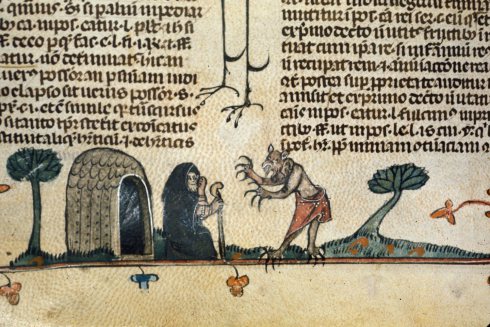
link.springer.com...
en.wikipedia.org...
Wolves...
Many fictional depictions of the Romani in literature and art present Romanticized narratives of their supposed mystical powers of fortune telling, and their supposed irascible or passionate temper paired with an indomitable love of freedom and a habit of criminality. Critics of how Romani people have been portrayed in popular culture point out similarities to portrayals of Jewish people, with both groups stereotyped negatively as wandering, spreading disease, abducting children, and violating and murdering others.
en.wikipedia.org...

Gypsies and Jews as Wolves in Realist Fiction
Bram Stoker’s Dracula (1897), a novel I will include in this discussion, as in its dense association of Romanies, wolves and the blood-sucking vampire it highlights European fears of the national community’s infection by foreign invaders.
link.springer.com...
"Little Red Riding Hood" is a European fairy tale about a young girl and a Big Bad Wolf.Its origins can be traced back to the 10th century to several European folk tales, including one from Italy called The False Grandmother. The two best known versions were written by Charles Perrault and the Brothers Grimm.
The story displays many similarities to stories from classical Greece and Rome. Scholar Graham Anderson has compared the story to a local legend recounted by Pausanias in which, each year, a virgin girl was offered to a malevolent spirit dressed in the skin of a wolf, who raped the girl. Then, one year, the boxer Euthymos came along, slew the spirit, and married the girl who had been offered as a sacrifice. There are also a number of different stories recounted by Greek authors involving a woman named Pyrrha (literally "fire") and a man with some name meaning "wolf". The Roman poet Horace alludes to a tale in which a male child is rescued alive from the belly of Lamia, an ogress in classical mythology.
en.wikipedia.org...
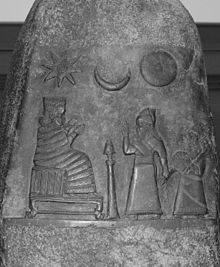
The Land grant to Ḫunnubat-Nanaya kudurru is a stele of King Meli-Shipak II (1186–1172 BCE). Nanaya, seated on a throne, is being presented the daughter of the king, Ḫunnubat-Nanaya. Kassite period limestone stele, Louvre.
Below excerpts timescale is already well into the decline of the Goddess, and Inanna is missing some of her good elements, appropriated by Marduk etc, more bipolar than triad or pentad.
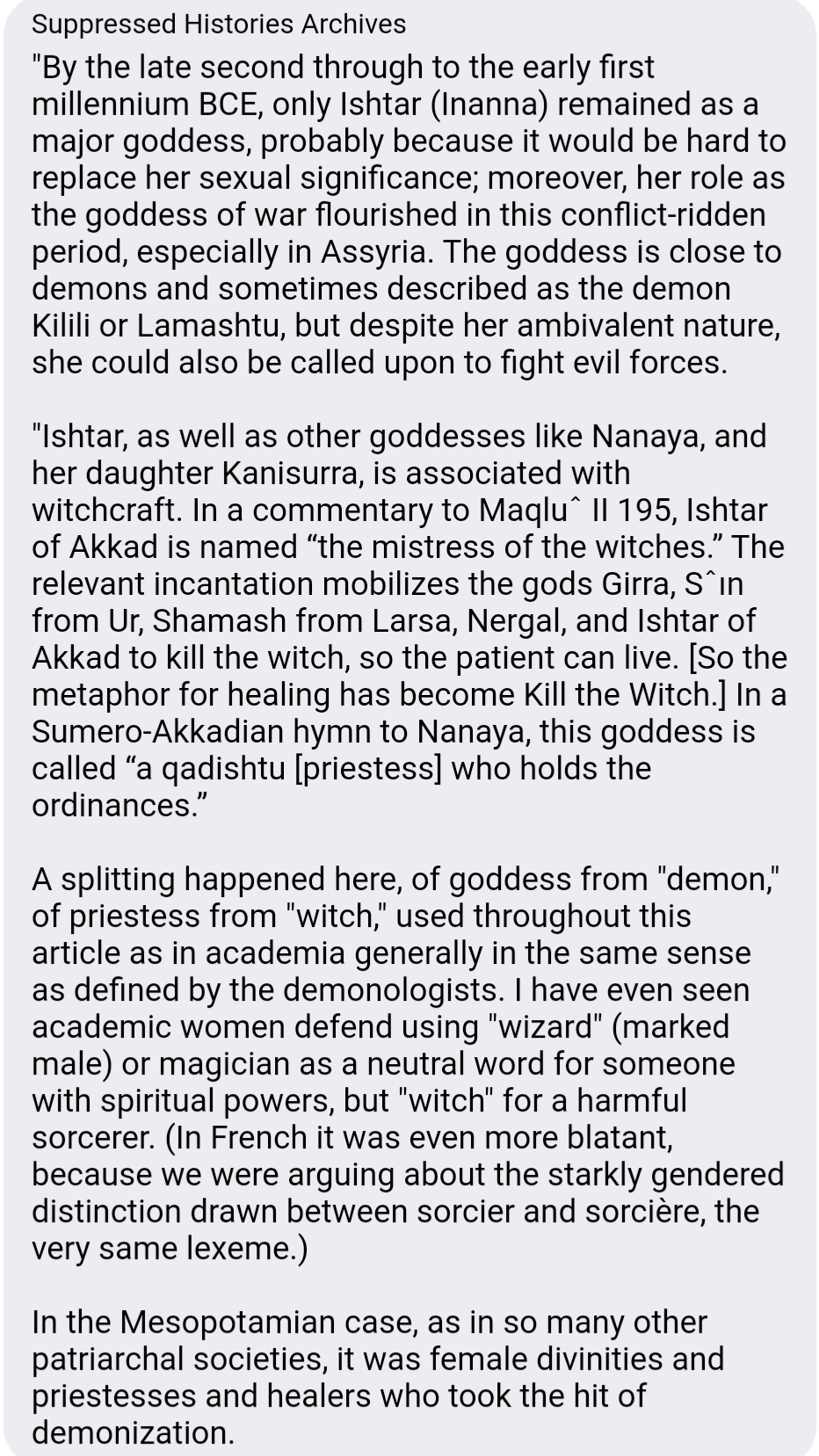
facebook.com
Her cult is also known from Aššur and Hatra. Nanai or Nanaya had the epithet “the great goddess of the entire earth” according to the Syriac Martyr Legend of Mār Muˁain of the 4th century (Hoffmann 1880: 29).
Nanaya was worshipped in Beth Garme in the fourth and fifth centuries because of the king Shapur’s resettlement of ninety families from Maysan at a village near Kirkuk, who brought the cult of Nanai along with them (Morony 1984: 386). She was also important at the court of Shapur II, and venerated in Beth ˁArbhaye (Hoffmann 1880: 49, 131). In the fifth century, she was worshipped with libations and sacrifices as Bēdukht at the town of Dumma below Kalwadha and in nearby Radhan.
The Iranian goddess Anāhīt, who was identified with Nanaya, may have been worshipped as Mammai in the Diyala region in the fifth century. The end of Nanaya’s cult can be approximately dated to the seventh century CE.
melammuproject.com
Well we know who is responsible for that, and now that it's their patriarchal homo cult that is dying, to see the Goddesses again will be a blessed relief.
lyrics
⚘
edit on 22-4-2021 by primalfractal because: (no reason given)
a reply to: primalfractal
The wolf was a totemic animal of the tribe of Benjamin of which Saul/Paul claimed descent, i think the Grail tradition had something of an uneasy relationship with the Roman church and they knew all about wolves, but they introduced so much good custom poetry/song/art/story and architecture into France, the tradition of Romantic and Courtly love Chansons and Troubadors, a good civilizing influence.

The dark side is quite passive relating to the depths of the Abyss and the saltiness of the sea, but there are those who strive to create bitterness and eradicate all that is good, and they do form packs, but i suppose the wolf men can be sorted out.
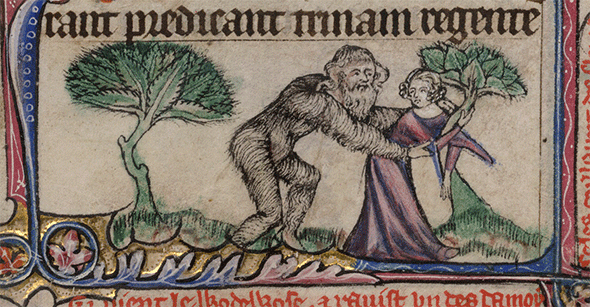
The wolf was a totemic animal of the tribe of Benjamin of which Saul/Paul claimed descent, i think the Grail tradition had something of an uneasy relationship with the Roman church and they knew all about wolves, but they introduced so much good custom poetry/song/art/story and architecture into France, the tradition of Romantic and Courtly love Chansons and Troubadors, a good civilizing influence.

The dark side is quite passive relating to the depths of the Abyss and the saltiness of the sea, but there are those who strive to create bitterness and eradicate all that is good, and they do form packs, but i suppose the wolf men can be sorted out.

a reply to: primalfractal
All aspects were shut down in the Near East.
This is why it is funny they re-located to France in some form, particularly that of Istar of Arbela.
Arbela in Iraq was a major cultic centre of prophesy in the sense of oracles, speaking in the name of Istar as the spirit incarnate, but there was also Arbela of Galilee likely as an extension of this cult, that was a key aspect in Mary Magdalene representing such, in the sense of Belle.
All aspects were shut down in the Near East.
Bound is ˁUlmaya who dwells in the desert of Kulaniya. Bound is ˁIlmaya Dew who dwells in the waste lands of Ubriya (and) Amiqta. Bound is the rebellious, dog-like Lilith who dwells on the river Pišra and calls herself Mamay. Bound are all Liliths and Istartes who dwell in the fortress of Škatin (= Bīt ˁIškatil) and Šarmat and Batunia of Bīt Ulaya. Shackled is the Lord of Bīt Zaman. Bound is Istarte Amašmiš of Šuš-Birta. Bound and shackled is Ispandarmid-Lilith, who calls herself Lady (-Ispandarmid). Bound is Anahid-Lilith of Arimin of Kaldayye. Bound (and shackled) is Nanay of Borṣip and shackled is Nanay of Bīt Guzayye which is in Gahzay. Bound is Ilaha Bruqa who sits on the bank of the Tigris. Bound is the Persian Gisur … Bound is Mohbaṭ-Sahir who sits on the hill of Mura. Bound is Mlaka of Radin, the reckless Šṭurga and bound is Istarte, the Lady of Bīt Zibna. Bound is Istarte of the new town (territory), the Istarte who sits on the bank of the Euphrates and calls herself Mulit. Bound are the sixty-six Ilahas. Bound is the phalanx of Nanay, she and her seven sisters who dwell on the river Harin (or: Hurin) in Bīt Hašim (Hašum). Bound and shackled is the Istarte of Akat, she and her three hundred and sixty tribes … Bound is Nerig of Zambur and Ilaha of Bīt Tuldana, they and their imprecations and their tribes.
This is why it is funny they re-located to France in some form, particularly that of Istar of Arbela.
The word of Ištar of Arbela to Esarhaddon, king of Assyria:
Come, gods, my fathers and brothers, enter the covenant . . .She placed a slice . of bread on the terrace and gave them water from a cooler to drink. She filled a flagon of one seah with water from the cooler and gave it to them with the words:
"In your hearts say, 'Ištar is slight,' and you will go to your cities and districts, eat your bread and forget this covenant.
But when you drink from this water, you will remember me and keep this covenant which I have made *"
Arbela in Iraq was a major cultic centre of prophesy in the sense of oracles, speaking in the name of Istar as the spirit incarnate, but there was also Arbela of Galilee likely as an extension of this cult, that was a key aspect in Mary Magdalene representing such, in the sense of Belle.
Perhaps the most prominent physical landmark around the Sea of Galilee is towering Mount Arbel. Mount Arbel is located near the sea’s western shore in the vicinity of ancient Magdala, home of Mary Magdalene.
There are many caves in the cliff, some of them were used as a fort. Under the cliff, on the right side, are the ruins of the Roman city of Arbela.
a reply to: Madrusa
Awsome giff, so much more to it than most, and the end bit is funny.
Yes the grail legends always seemed like good high ideals to me also, and the South of France looks beautiful, a perfect setting for such tales of love and intrigue.
To my mind the Albigensian Crusade always showed that they had something special there, for the Pope to turn that hard on what is basically a form of Christianity, must have scared him.
Cathars had a baptism of fire they claimed was the true baptism handed down by Jesus. Maybe something like the Shakers or the Kalahari bushmen I suspect. The ghost dance of the American Indians is another example. There was a weird thing in Europe back in the day where everyone started this wild religous based ecstatic dance.
en.m.wikipedia.org...
The legends that persist of the Perfects outright refusing to recant, and not screaming as they burned, point to something beyond normal in the way of mental control. A shame, and one of many, bought about by the Roman Catholics.
Anyway their tales have passed down to us and still inspire today, which is good.
Awsome giff, so much more to it than most, and the end bit is funny.
Yes the grail legends always seemed like good high ideals to me also, and the South of France looks beautiful, a perfect setting for such tales of love and intrigue.
To my mind the Albigensian Crusade always showed that they had something special there, for the Pope to turn that hard on what is basically a form of Christianity, must have scared him.
Cathars had a baptism of fire they claimed was the true baptism handed down by Jesus. Maybe something like the Shakers or the Kalahari bushmen I suspect. The ghost dance of the American Indians is another example. There was a weird thing in Europe back in the day where everyone started this wild religous based ecstatic dance.
en.m.wikipedia.org...
The legends that persist of the Perfects outright refusing to recant, and not screaming as they burned, point to something beyond normal in the way of mental control. A shame, and one of many, bought about by the Roman Catholics.
Anyway their tales have passed down to us and still inspire today, which is good.
edit on 23-4-2021 by primalfractal because: (no reason
given)
a reply to: primalfractal
It's a question of what the sensible one is about in the basic pairing of Mary and Martha, which is from Aramaic Martan-The Lady, i think she was an aspect of the Pentad perhaps in the sense of strong and sensible defender and somewhat militaristic, another was the personification of the City of Uruk as the establishment of the Pentad, the earliest attested Pentagram being the City sign for Uruk, maybe later the Lady of the tower/Grail Castle.
It's a question of what the sensible one is about in the basic pairing of Mary and Martha, which is from Aramaic Martan-The Lady, i think she was an aspect of the Pentad perhaps in the sense of strong and sensible defender and somewhat militaristic, another was the personification of the City of Uruk as the establishment of the Pentad, the earliest attested Pentagram being the City sign for Uruk, maybe later the Lady of the tower/Grail Castle.
a reply to: Madrusa
So Mary Magdalene was a bodyguard of sorts, and took on the role of decoy in that function? Makes me wonder about JC.


sacredconnections.co.uk...
So Mary Magdalene was a bodyguard of sorts, and took on the role of decoy in that function? Makes me wonder about JC.


sacredconnections.co.uk...
new topics
-
Electrical tricks for saving money
Education and Media: 1 hours ago -
VP's Secret Service agent brawls with other agents at Andrews
Mainstream News: 2 hours ago -
Sunak spinning the sickness figures
Other Current Events: 3 hours ago -
Nearly 70% Of Americans Want Talks To End War In Ukraine
Political Issues: 3 hours ago -
Late Night with the Devil - a really good unusual modern horror film.
Movies: 5 hours ago -
Cats Used as Live Bait to Train Ferocious Pitbulls in Illegal NYC Dogfighting
Social Issues and Civil Unrest: 6 hours ago -
The Good News According to Jesus - Episode 1
Religion, Faith, And Theology: 8 hours ago -
HORRIBLE !! Russian Soldier Drinking Own Urine To Survive In Battle
World War Three: 10 hours ago
top topics
-
SETI chief says US has no evidence for alien technology. 'And we never have'
Aliens and UFOs: 17 hours ago, 8 flags -
Cats Used as Live Bait to Train Ferocious Pitbulls in Illegal NYC Dogfighting
Social Issues and Civil Unrest: 6 hours ago, 8 flags -
Florida man's trip overseas ends in shock over $143,000 T-Mobile phone bill
Social Issues and Civil Unrest: 13 hours ago, 8 flags -
VP's Secret Service agent brawls with other agents at Andrews
Mainstream News: 2 hours ago, 7 flags -
Former Labour minister Frank Field dies aged 81
People: 15 hours ago, 4 flags -
Bobiverse
Fantasy & Science Fiction: 13 hours ago, 3 flags -
HORRIBLE !! Russian Soldier Drinking Own Urine To Survive In Battle
World War Three: 10 hours ago, 3 flags -
Nearly 70% Of Americans Want Talks To End War In Ukraine
Political Issues: 3 hours ago, 3 flags -
Sunak spinning the sickness figures
Other Current Events: 3 hours ago, 3 flags -
Late Night with the Devil - a really good unusual modern horror film.
Movies: 5 hours ago, 2 flags
active topics
-
Cats Used as Live Bait to Train Ferocious Pitbulls in Illegal NYC Dogfighting
Social Issues and Civil Unrest • 14 • : charlyv -
-@TH3WH17ERABB17- -Q- ---TIME TO SHOW THE WORLD--- -Part- --44--
Dissecting Disinformation • 652 • : 777Vader -
President BIDEN Vows to Make Americans Pay More Federal Taxes in 2025 - Political Suicide.
2024 Elections • 126 • : DBCowboy -
IDF Intel Chief Resigns Over Hamas attack
Middle East Issues • 44 • : BrotherKinsMan -
Terrifying Encounters With The Black Eyed Kids
Paranormal Studies • 73 • : burritocat -
SETI chief says US has no evidence for alien technology. 'And we never have'
Aliens and UFOs • 43 • : boatguy12 -
The Reality of the Laser
Military Projects • 45 • : 5thHead -
Spectrophilia - Women Who Have Had Affairs With Ghosts Say Spooks Are Better Lovers Than Real Men
Paranormal Studies • 31 • : charlyv -
HORRIBLE !! Russian Soldier Drinking Own Urine To Survive In Battle
World War Three • 29 • : doubledan717 -
VP's Secret Service agent brawls with other agents at Andrews
Mainstream News • 19 • : NoCorruptionAllowed

